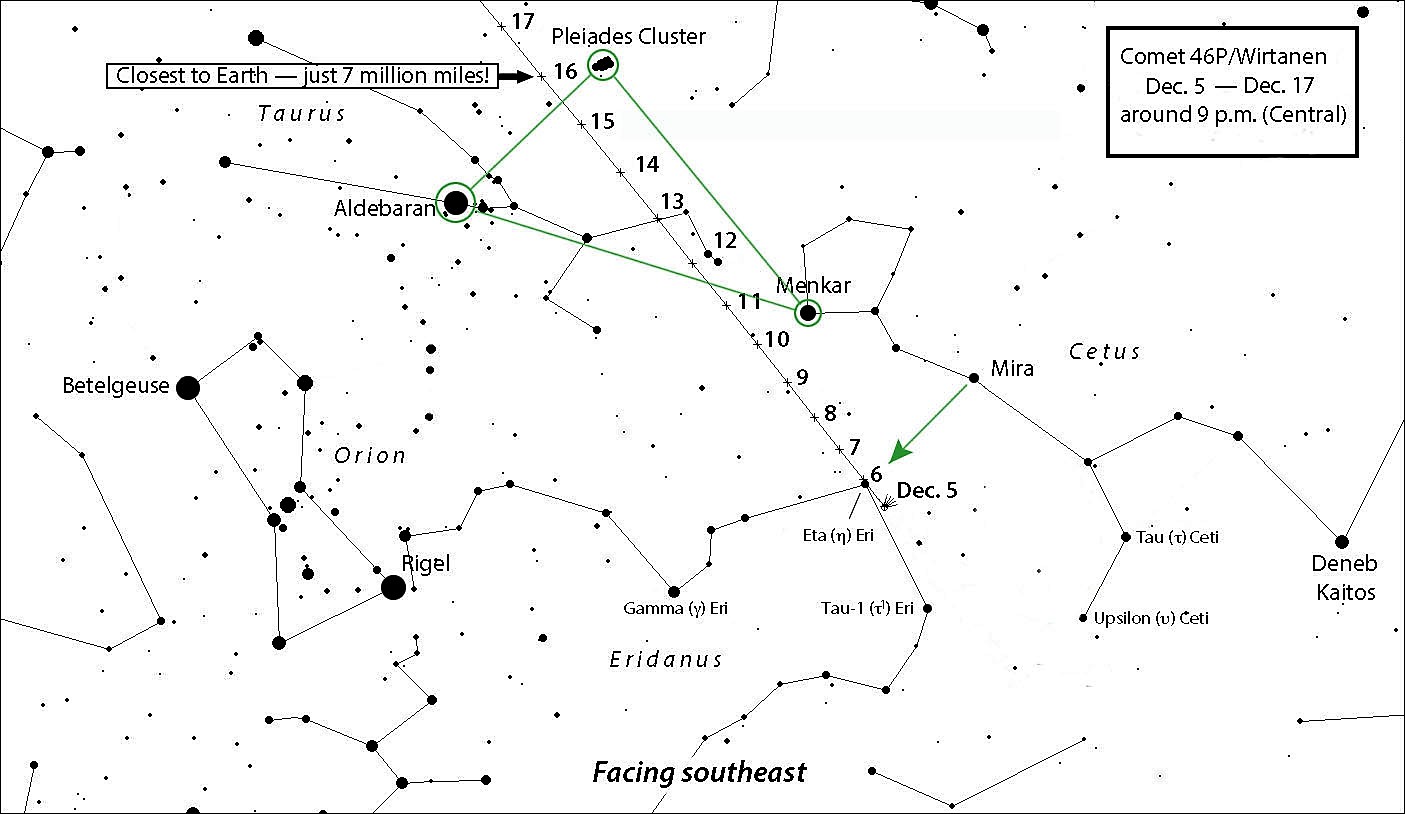December nights can be tricky- they are sometimes very clear, sometimes not all that cold, but it seems like they are hardly ever both. The clearest nights often come right after a cold front has come through, but there will be a couple of rewards in the sky for those who bundle up, especially around the middle of the month.
Many of you will be familiar with the Perseid meteor shower, which peaks around August 12 every year. I myself have gone out to see them many times. The combination of warm weather and people being on summer vacation make the Perseids by far the most famous and most watched meteor shower.
However, sometimes the Geminids, peaking this year the night of December 13-14, are even greater in numbers. The best time to look will probably be from around 11 pm- 3 am. If you can brave the cold, find a spot far away from city lights, and BUNDLE UP, you might see as much as a meteor every minute or two. I have had the best luck when I bring a lawn chair or blanket and just lay down and watch for a long time. This is where the bundling up will be critical, as sitting still on a cold night is a recipe for frostbite! Bring layered clothing, gloves, hats, and a couple of pairs of socks to keep all of your body heat from escaping.
The meteors will appear to come from a point in the constellation Gemini, high overhead in the middle of the night, so looking generally high in a direction where the sky seems darkest will be best. The best time to look will probably be from around 11 pm- 3 am. It will be a late night! If you prefer to watch from the back yard of your suburban or urban home, that is fine, but you will see much fewer meteors, perhaps just a few each hour, but maybe enough to be worthwhile. Meteors are tiny bits of rock and dust left behind by comets. They heat up as the burn up in Earth’s atmosphere. There are many meteor showers that occur every year, as the Earth intersects the orbits of these comets, but the Perseids and Geminids are the best to view.
One other reason to make the trip to a darker sky site will be the chance to catch another cosmic visitor- Comet 46P/Wirtanen, discovered in 1948. The 46th comet to have its orbit determined, Comet Wirtanen takes 5 ½ years to orbit the Sun. It is a small comet and usually only visible in large telescopes, but this year, it happens to be closest to Earth at almost exactly the same time it is closest to the Sun. It will become moderately bright, the best comet of the last several years. At its closest approach to Earth on Dec. 16, it may shine with a total brightness almost equal to the stars in Orion’s belt or the Big Dipper. However, this brightness will be spread out over an area about the size of the Full Moon in the sky or even larger, so the comet will probably just look like a fuzzy dim spot in the sky. Unfortunately, being a small comet, such a tail as Wirtanen might develop is likely to be visible only in long and multiple exposure images.
Still, it will be cool to follow this cosmic visitor from night to night as it follows the path shown in the chart here. There is no reason to hide in your basement when the comet approaches- even at its nearest, Comet Wirtanen will get no closer than 7 million miles from Earth, or about thirty times farther than the Moon. Because of the comet’s light being so spread out, it will probably be very hard to find if you are too close to a big city, but it should be fairly easy to spot in good 7 or 10 power binoculars and to the unaided eye from dark sky locations where you can see the Milky Way. Probably the best time to look will be after the Moon sets in mid December, maybe the same night you go out to look at the Geminid meteor shower. Look for the constellation Orion- the three stars in the belt point towards the orange colored star Aldebaran and then to the Pleiades cluster. Use the chart here, used with permission from Sky and Telescope magazine, to home in on the comet’s position. From a dark sky site, scan with binoculars, and then try to glimpse the comet with your unaided eye.
This will be the only chance any of us will have to see Comet Wirtanen, unless you have access to a large telescope. On the way to the outer solar system, the comet will pass relatively close to Jupiter, whose gravity will change its orbit so that it will never pass this close to Earth again in the foreseeable future.

chart courtesy of Sky and Telescope Magazine
